ALBERT JOHN HARRIMAN MEWBURN (born 1845- died June 2, 1866
A letter dated July 3, 1866 from Robert P. Denby of Queenston Ontario to his brother Frederick at Carlton Place
"My Dear Frederick,
It is with sad heart that I write you this day- your beloved cousin Little Albert John was killed, the eve past by those damning Fenians may the the Lord curse the lot.
It all started when the Queen's Own were called from Toronto and as you must know they comprised mainly of College students and other young men of Albert's age. Well, Albert's Commanding Officer Lt. Col. Booker while scouting near Niagara Falls, their company came upon Gen. O`Neill`s outpost which comprised about 1,000 men.
Before anyone could get word to Col. Peacock`s troops a shot was fired and a battle ensued which thank the Lord only lasted a few minutes.
But dear brother, Albert along with five other men and one officer were killed, not to mention twenty three wounded, including four officers.
The difficult part of this is the fact that Albert had not actually signed on or had been sworn in by Col. Booker, and had taken it upon himself to defend his Sovereign`s country.
I am requesting therefore that you as his uncle try your best to obtain a signed petition to Lord Monck our Governor General to have a medal of bravery and devotion made for him.
With Providence I remain
Robert P. Denby``
A letter dated July 3, 1866 from Robert P. Denby of Queenston Ontario to his brother Frederick at Carlton Place
"My Dear Frederick,
It is with sad heart that I write you this day- your beloved cousin Little Albert John was killed, the eve past by those damning Fenians may the the Lord curse the lot.
It all started when the Queen's Own were called from Toronto and as you must know they comprised mainly of College students and other young men of Albert's age. Well, Albert's Commanding Officer Lt. Col. Booker while scouting near Niagara Falls, their company came upon Gen. O`Neill`s outpost which comprised about 1,000 men.
Before anyone could get word to Col. Peacock`s troops a shot was fired and a battle ensued which thank the Lord only lasted a few minutes.
But dear brother, Albert along with five other men and one officer were killed, not to mention twenty three wounded, including four officers.
The difficult part of this is the fact that Albert had not actually signed on or had been sworn in by Col. Booker, and had taken it upon himself to defend his Sovereign`s country.
I am requesting therefore that you as his uncle try your best to obtain a signed petition to Lord Monck our Governor General to have a medal of bravery and devotion made for him.
With Providence I remain
Robert P. Denby``
Rifleman John Harriman MEWBURN, the only son of Harriman Chilton MEWBURN, a headmaster at Calton Place grammar school, and Ann Mewburn of Stamford, near Niagara Falls, Ontario was with the volunteer company (No. 9) of the University of Toronto students that were part of the Queen's Own Rifles.
He had just completed his third year of studies, achieving grades good enough to warrant consideration for the annual University College scholarship. On June 1 he was called out from his dormitory to the Toronto Drill shed, and then transported by ship to Port Dalhousie, and by rail to Ridgeway.
Answering the call to duty was a tradition with the MEWBURN family.
John Harriman's grandfather, DR. JOHN MEWBURN, a respected magistrate and coroner in Niagara, volunteered for the defence of Toronto during the McKenzie rebellion. His elder son, John Jr. was one of the militia who sent the "Caroline" over the Falls in December 1837.
His younger sons, Thomas Chilton and Harrison Chilton, (John Harriman's father) were in the cavalry troop that hunted down the American sympathizers and rebels under James Morrow who had successfully attacked Col. Magraths 13 British lancers at the Short Hills (Fonthill-Pelham).
The battle in the fields north of Ridgeway began at 7:30 AM. Within 2 hours Company 9 had advanced the farthest against the Fenians, starting at Garrison Road and moving steadily forward across Bertie Road to open wheat fields just east of Ridge Road. Regrettably the company had become separated from the main Canadian force and would bear the brunt of a Fenian counterattack. They retreated slightly to the crossroads at Ridge and Bertie, and turned to face their pursuers amid a hailstorm of bullets.
Mewburn was wounded in the exchange, in all likelihood by a bullet which creased the side of his temple causing delirium and convulsions. He lay writing in the road in front of the Anger house until Fenian soldiers bound him and threw him face down. A fellow university student named Kingsford prevailed on the Fenians to unbind him and lay him on his back. Mewburn died within half an hour from the complications of his wounds and possible heat stroke as well. His body was dumped in the kitchen of a farmhouse on Ridge Road.
J.H. Mewburn was identified by a member of Company 9 at a field hospital in Port Colborne- his face twisted and features distorted as if he died in agony.
The body of the boy with significant academic promise and a beautiful singing voice was returned to St. Catharines for funeral at St. Johns Anglican Church Stamford. One of his favourite songs was: It is sweet and fitting to die for ones country.
He had just completed his third year of studies, achieving grades good enough to warrant consideration for the annual University College scholarship. On June 1 he was called out from his dormitory to the Toronto Drill shed, and then transported by ship to Port Dalhousie, and by rail to Ridgeway.
Answering the call to duty was a tradition with the MEWBURN family.
John Harriman's grandfather, DR. JOHN MEWBURN, a respected magistrate and coroner in Niagara, volunteered for the defence of Toronto during the McKenzie rebellion. His elder son, John Jr. was one of the militia who sent the "Caroline" over the Falls in December 1837.
His younger sons, Thomas Chilton and Harrison Chilton, (John Harriman's father) were in the cavalry troop that hunted down the American sympathizers and rebels under James Morrow who had successfully attacked Col. Magraths 13 British lancers at the Short Hills (Fonthill-Pelham).
The battle in the fields north of Ridgeway began at 7:30 AM. Within 2 hours Company 9 had advanced the farthest against the Fenians, starting at Garrison Road and moving steadily forward across Bertie Road to open wheat fields just east of Ridge Road. Regrettably the company had become separated from the main Canadian force and would bear the brunt of a Fenian counterattack. They retreated slightly to the crossroads at Ridge and Bertie, and turned to face their pursuers amid a hailstorm of bullets.
Mewburn was wounded in the exchange, in all likelihood by a bullet which creased the side of his temple causing delirium and convulsions. He lay writing in the road in front of the Anger house until Fenian soldiers bound him and threw him face down. A fellow university student named Kingsford prevailed on the Fenians to unbind him and lay him on his back. Mewburn died within half an hour from the complications of his wounds and possible heat stroke as well. His body was dumped in the kitchen of a farmhouse on Ridge Road.
J.H. Mewburn was identified by a member of Company 9 at a field hospital in Port Colborne- his face twisted and features distorted as if he died in agony.
The body of the boy with significant academic promise and a beautiful singing voice was returned to St. Catharines for funeral at St. Johns Anglican Church Stamford. One of his favourite songs was: It is sweet and fitting to die for ones country.
Sources- Vronski and others on request
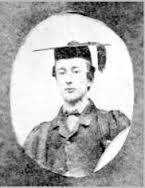
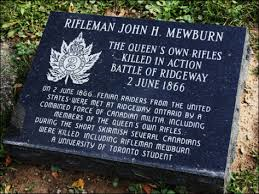
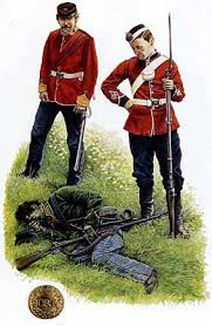
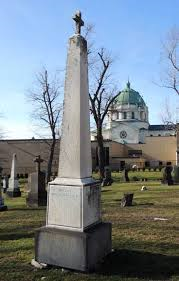
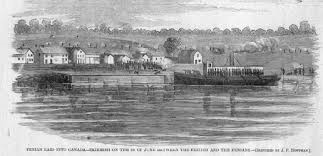
 RSS Feed
RSS Feed